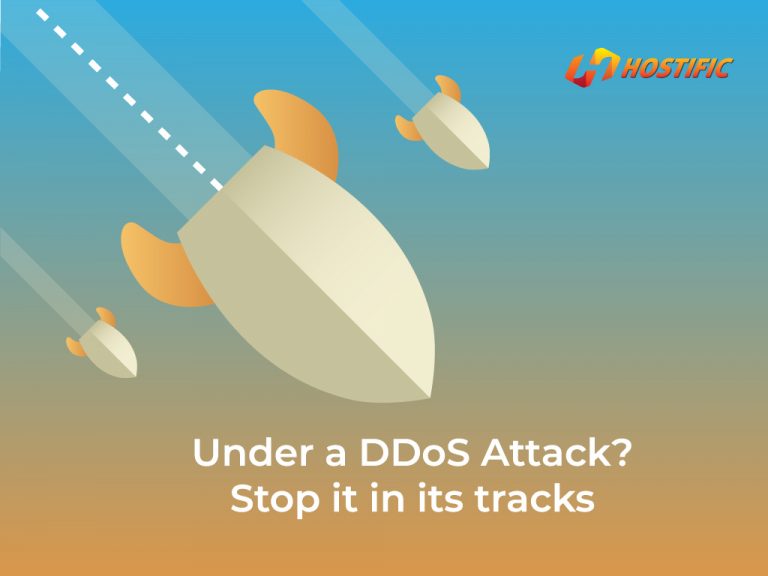One of the most commonly known, quick-fire cyberattacks levied at websites is a Distributed denial-of-service or DDOS attack. While this may sound like sophisticated hacker lingo, these attacks aren’t only orchestrated by cyber masterminds. Anyone with an internet connection can do it and that includes your toughest competitor.
As the name suggests a DDOS simply works to prevent your service from doing its job.
In an attack, the attacker employs a large number of machines or bots from all over the internet. These bots send extremely high amounts of traffic towards the target’s server in order to overwhelm it.
These attacks can have dire consequences and long term effects on your business. As a business owner, your utmost priority among a very long list of priorities is employing adequate security and preventive measures to thwart threats to your business.
In this article we will discuss how DDOS attacks are organized. This will shed light on how to detect an attack on your server, prepare for an attack and how to fix it fast.
Table of Contents
What is a DDoS Attack?
A DDoS attack is carried out by flooding a server with a tremendous number of packet request or traffic. The flood of traffic overwhelms the targeted site until it shuts down or goes offline.
Usually, the source of the traffic or packet requests is sent from a network of compromised “zombie” computers. Also known as a botnet that sends the stream of traffic as stated above. Thus living up to its name as a distributed denial of service. Your end users are unable to access your website as a result.
What makes matters worse is that anyone with malicious intent can crawl hacker forums, YouTube, and blogs for instructions on how to launch a DDOS attack.
How to know if you’re under a DDoS Attack?
The issue facing site owners is determining whether or not a server lag or disruption of their website is due to an actual spike in real traffic or an orchestrated DDoS assault.
The length of time your servers are down will decide if you are under a DDoS attack or just experiencing a traffic surge due to a recent marketing campaign for example.
If it is a prolonged disruption of service over a course of a day or two then it is time to call your Tech Support team and find the source of the problem. Yes, genuine traffic from visitors can cause delay or slow loading times and if there is a significant spike can knock your servers down for a few hours. The key here is extended disruption.
Furthermore, if the identical source IP address is querying for the same data long before the Time to Live (TTL) has passed, it could be a signal that they are indeed bots.
Unfortunately, it is impossible to check to see if all the traffic is coming from the same IP, as this is the exact strategy of a DDoS assault— having traffic pour in from multiple sources/computers.
Why do Hackers Target Websites with DDoS Assaults?
Easy to Use:
No expert skill needed to launch a DDoS attack. Bottom line it’s unassuming to attack any website this way and it works effectively. What’s more, it’s often a big challenge for your security team, technical support or law enforcement to track down the attackers because they use proxies to assault your website from various locations.
Extortion:
A lot of hackers use a DDoS attack to extort money from businesses by holding your website ransom. They levy a cease of attack in order to get cash. This can wound your business financially while making the anonymous hacker just that much richer.
Kill the Competition:
To get ahead in the industry and stop the competition dead in the water. Sometimes companies hire hackers/cybercriminals to weaken competition or at least damage their reputation so that they can emerge on top.
Preparing your Website for a DDoS Attack
There is no conceivable reason for you to wait for a DDOS attack to happen. ‘Prevention is always better than cure’.
Be pro-active and prepare your website to thwart a DDoS attack if necessary. This can save you time, money, loss of data and damage to your business’ reputation. Just follow these simple steps to help you safeguard and prepare for an attack.
1. Be Aware and Vigilant:
When considering your hosting options, invest in monitoring tools that allow you to track your server’s normal pattern of behaviour; and will notify you of suspicious activity like in the event of an attempted DDoS attack.
2. Increase Capacity:
Make sure you allocate enough server capacity/bandwidth and allow adjustment for the best performance under high traffic. Use a CDN to help you with advanced mitigation. Upgrade hosting to VPS for more resources when needed.
3. Drill your Defense Strategy:
Run practice test. You want to know your defense strategy inside and out and practice employing it.
4. Get Help:
If you don’t have the technical support in-house to deal with attacks then outsource the technical support. Use a managed DNS Provider or your Hosting Solution’s Technical Support team that can redirect your site visitors to servers that aren’t down with features like load balancing and performance monitoring.
5. Be Prepared:
The best way to avoid any disruption of your website/ business from a DDoS attack is to be prepared for it. Think about the impression it would have on your company financially if your site experiences downtime not to mention your reputation with your clients/end users. Even though it may not be an apparent risk it is very much a possibility, and the costs associated with being attacked is usually much higher than the cost to take precaution.
6. Back Up your Website:
Keep a backup of your website in a cloud-based server in order to preserve the latest website copy.
Fixing a DDoS Assault Fast
Notwithstanding your efforts at prevention, your site has been blitzed by a DDoS attack and it is now down. You need a quick-fire solution to avoid either being extorted by the cybercriminals to cease the assault, or destroying your reputation in the eyes of your customers.
Here’s the resolution to employ to get your Site back up and running.
Step 1: Identify the Attack Immediately
This requires vigilance. Sure you may have been running a promotion which may have augmented traffic to your website and thus no worries of an attack. However, if you notice a large surge of traffic to your site causing it to lag or experience server downtime then be proactive.
Step 2: Allocate more Bandwidth
Under an attack having more server bandwidth allocated for your website can give you adequate time to salvage a line of defense. While having increased bandwidth won’t stop an attack it can give you the time necessary to act.
Step 3: Set a Line of Defense at the Network Perimeter
If you run your own server there are some technical things you can employ during a DDoS attack:
- Set a rate limit on your router to prevent your server from being overcome.
- Add filters so your router drops packets from obvious sources of attack even if they are using proxies (likely).
- Aggressively timeout half-open connections.
- Drop spoofed or malformed packages immediately.
- Set lower SYN, ICMP, and UDP flood drop thresholds.
Nevertheless, the reality is that while these manoeuvres have been effective in the past against DDoS attacks, they are now usually too grand for even these measures to be able to stop an attack entirely. Time is the best remedy here to help you cut the attack off.
Step 4: Contact your Hosting Provider
Let them know you are under a DDoS attack. Ask them to assist you in mitigating and diffusing the attack before your server fails. When a DDoS attack is at full scale, the first thing a hosting company or ISP is likely to do is “null route” your traffic – which results in packets intended for your web server being dropped before they arrive and preventing damage. To get the website back online, your hosting company may deter traffic to a “scrubber,” where the malicious packets can be removed before the legitimate ones are sent to your server.
Step 5: Use a DDoS Mitigation Specialists
With very large scale DDoS attacks, it’s likely that your website’s best chance of staying online is to employ a specialist or DDoS Mitigation Provider. These organizations have specialized infrastructure and have an assortment of technologies, including data scrubbing, to help your server stay online. You may have to contact a DDoS mitigation company directly, or your hosting provider may have a partnership agreement with one to handle large attacks for you.






